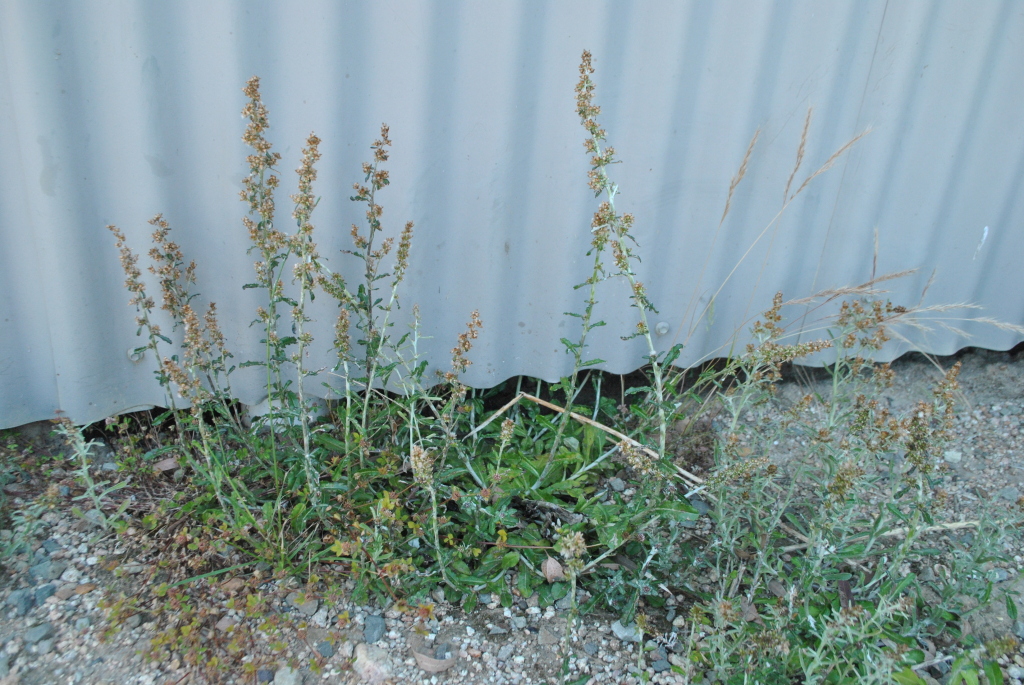Gamochaeta purpurea
(L.) Cabrera Spike CudweedAnnual 10–40(–50) cm high; stems erect to ascending. Leaves rosette at base (persisting in a rosette at flowering), and cauline; rosette leaves spathulate to oblanceolate 1–6 cm long, 5–14 mm wide, rounded to acute, upper surface glabrescent to loosely and sparsely arachnoid, lower surface white with appressed cottony hairs, margins sometimes sinuate; cauline leaves similar but progressively smaller and relatively narrower toward (and within) inflorescence. Inflorescence usually narrowly spicate, with numerous contiguous clusters, each subtended by a small leaf, clusters c. sessile, shortly racemose or the lower ones sometimes elongate and then the inflorescence narrowly paniculate. Capitula 4–4.5 mm long, innermost bracts acute, entire, purplish when young, becoming whitish or slightly silvery at maturity; bisexual florets 3–4. Cypselas 0.6–0.7 mm long. Flowers throughout year (mostly Oct.–Feb.).
MuM, Wim, GleP, VVP, VRiv, MuF, GipP, OtP, WaP, Gold, CVU, GGr, DunT, NIS, EGL, EGU, WPro, HSF, HNF, OtR, Strz, MonT, HFE, VAlp. Probably naturalised all States except NT. Native to the Americas, widely naturalised elsewhere. Native to North, Central America and South America and the Caribbean Islands. Throughout southern Victoria and along the Murray River and its tributaries, particularly in wet or moist soil (steam banks, ditches etc.), but also in wasteland, gardens, footpaths etc.
Walsh, N.G. (1999). Gamochaeta. In: Walsh, N.G.; Entwisle, T.J., Flora of Victoria Vol. 4, Cornaceae to Asteraceae, pp. 816–818. Inkata Press, Melbourne.
 Spinning
Spinning


